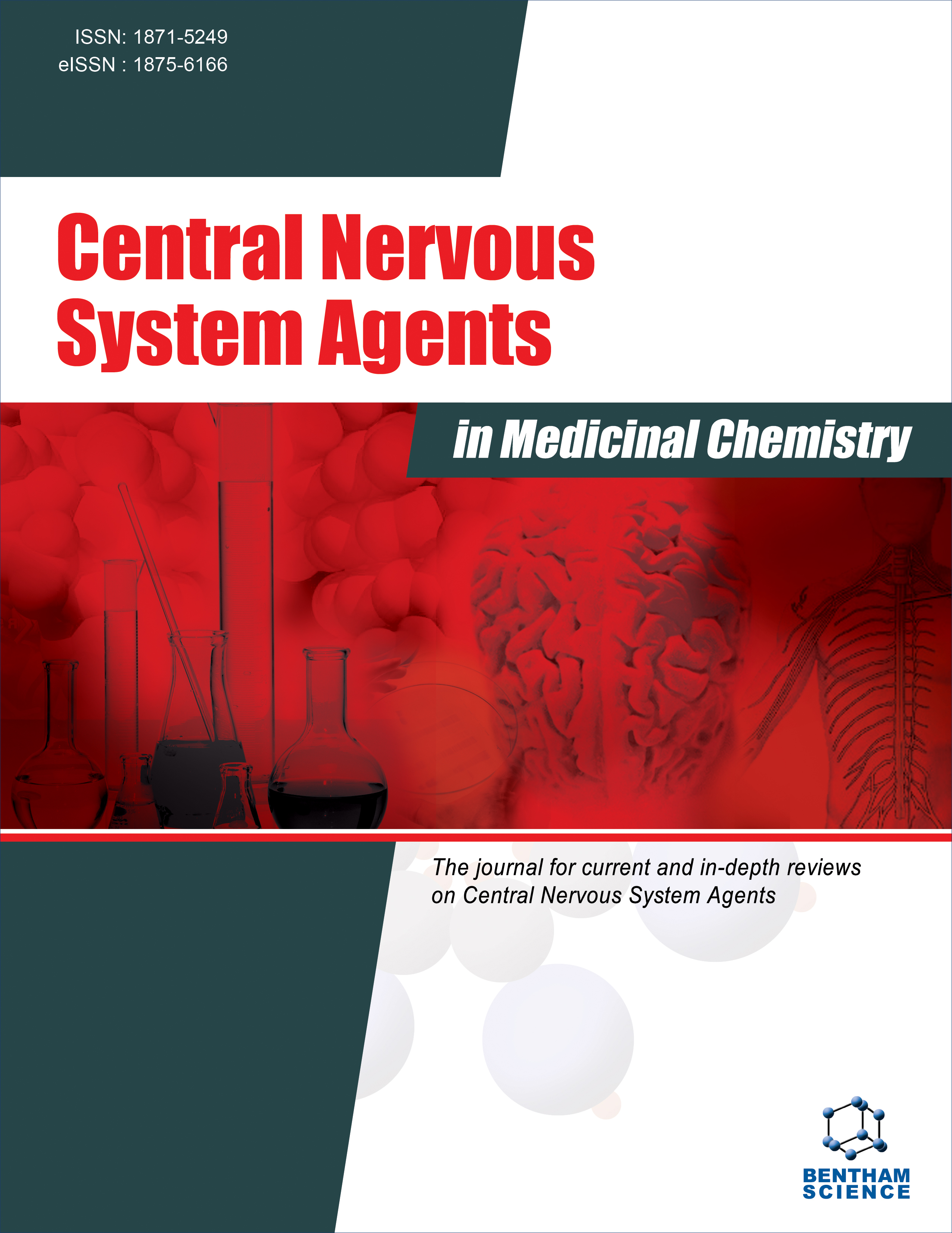- Home
- A-Z Publications
- Central Nervous System Agents in Medicinal Chemistry (Formerly Current Medicinal Chemistry - Central Nervous System Agents)
- Previous Issues
- Volume 20, Issue 2, 2020
Central Nervous System Agents in Medicinal Chemistry (Formerly Current Medicinal Chemistry - Central Nervous System Agents) - Volume 20, Issue 2, 2020
Volume 20, Issue 2, 2020
-
-
α-Substituted Lactams and Acetamides: Ion Channel Modulators that Show Promise in Treating Drug-resistant Epilepsy
More LessThe two main problems in the pharmacotherapy of epilepsy are resistance to currently available first-line medications (which occurs in about one third of patients) and the high incidence of side effects. To address these two challenges, extensive efforts are being undertaken to design new, structurally distinct antiepileptic drugs with a broad spectrum of anticonvulsant activity. Tests in animal models of epilepsy indicate that Read More
-
-
-
Understanding the Pathogenesis Involved in Parkinson’s Disease and Potential Therapeutic Treatment Strategies
More LessAuthors: Meenakshi Dhanawat, Dinesh K. Mehta, Sumeet Gupta and Rina DasA vast advancement has been made in the treatment related to central nervous system disorders especially Parkinson’s disease. The development in therapeutics and a better understanding of the targets results in upsurge of many promising therapies for Parkinson’s disease. Parkinson’s disease is defined by neuronal degeneration and neuroinflammation and it is reported that the presence of the neurofibrillary aggregate Read More
-
-
-
A Link Between Brain Insulin Resistance and Cognitive Dysfunctions: Targeting Ca2+/cAMP Signalling
More LessBackground: A correlation between cognitive dysfunctions and brain insulin resistance has been established by several clinical and experimental studies. Consistent data support that people diagnosed with brain insulin resistance, resulted from diabetes, have shown an increased risk of presenting cognitive dysfunctions, clinical signs of dementia and depression, then speculating a role of dysregulations related to insulin s Read More
-
-
-
Drug Repositioning: Antimalarial Activities of GABA Analogs in Mice Infected with Plasmodium berghei
More LessBackground: Drug repositioning is becoming popular due to the development of resistance to almost all the recommended antimalarials. Pregabalin and gabapentin are chemical analogs of gamma- aminobutyric acid (GABA) approved for the treatment of epilepsy and neuropathic pain. Objective: This study investigates acute toxicities and antimalarial activities of pregabalin and gabapentin in the murine malarial m Read More
-
-
-
Behavioral Evaluation of the Effects of Aqueous and Ethanol Extracts of Suaeda vermiculata Forssk on Rats
More LessBackground: Suaeda vermiculata is one of the widely distributed halophytes in central Saudi Arabia. The plant is used as a remedy for liver diseases, jaundice, and inflammation. S. vermiculata is also used as camels' food by local shepherds. Purpose: The study aims to evaluate the behavioral antidepressant and anxiolytic effects of S. vermiculata aqueous and ethanol extracts. Methods: Aqueous and ethanol extracts Read More
-
-
-
Theoretical Study of Monoamine Oxidase B Inhibitors as Drug Candidates for Treatment of Parkinson’s Disease
More LessBackground: Drugs used for Parkinson's disease (PD) are mainly responsible for only relieving major symptoms, but may present several side effects that are typical of such pharmacological treatment. Methods: This study aimed to use in silico methods for drug designing inhibitors of the PD therapeutic target, monoamine oxidase B (MAO-B). Thus, 20 MAO-B inhibitors from the BindingDB database were selected followed b Read More
-
-
-
Potential Mechanisms Involved in the Anticonvulsant Effect of Methanol Extract of Pyrenancantha staudtii in Mice
More LessObjective: To determine the potential effect of Pyrenancantha staudtii extract on experimentally induced seizures in mice and to evaluate the role of benzodiazepines, naloxone, and serotonin within these pathways. Methods: Animal behaviours were evaluated using open field, hexobarbitone-induced sleep model, and anticonvulsant activity using picrotoxin-, or strychnine-, or isoniazid-induced convulsions. Attempt to understa Read More
-
Volumes & issues
-
Volume 25 (2025)
-
Volume 24 (2024)
-
Volume 23 (2023)
-
Volume 22 (2022)
-
Volume 21 (2021)
-
Volume 20 (2020)
-
Volume 19 (2019)
-
Volume 18 (2018)
-
Volume 17 (2017)
-
Volume 16 (2016)
-
Volume 15 (2015)
-
Volume 14 (2014)
-
Volume 13 (2013)
-
Volume 12 (2012)
-
Volume 11 (2011)
-
Volume 10 (2010)
-
Volume 9 (2009)
-
Volume 8 (2008)
-
Volume 7 (2007)
-
Volume 6 (2006)
Most Read This Month
Article
content/journals/cnsamc
Journal
10
5
false
en


